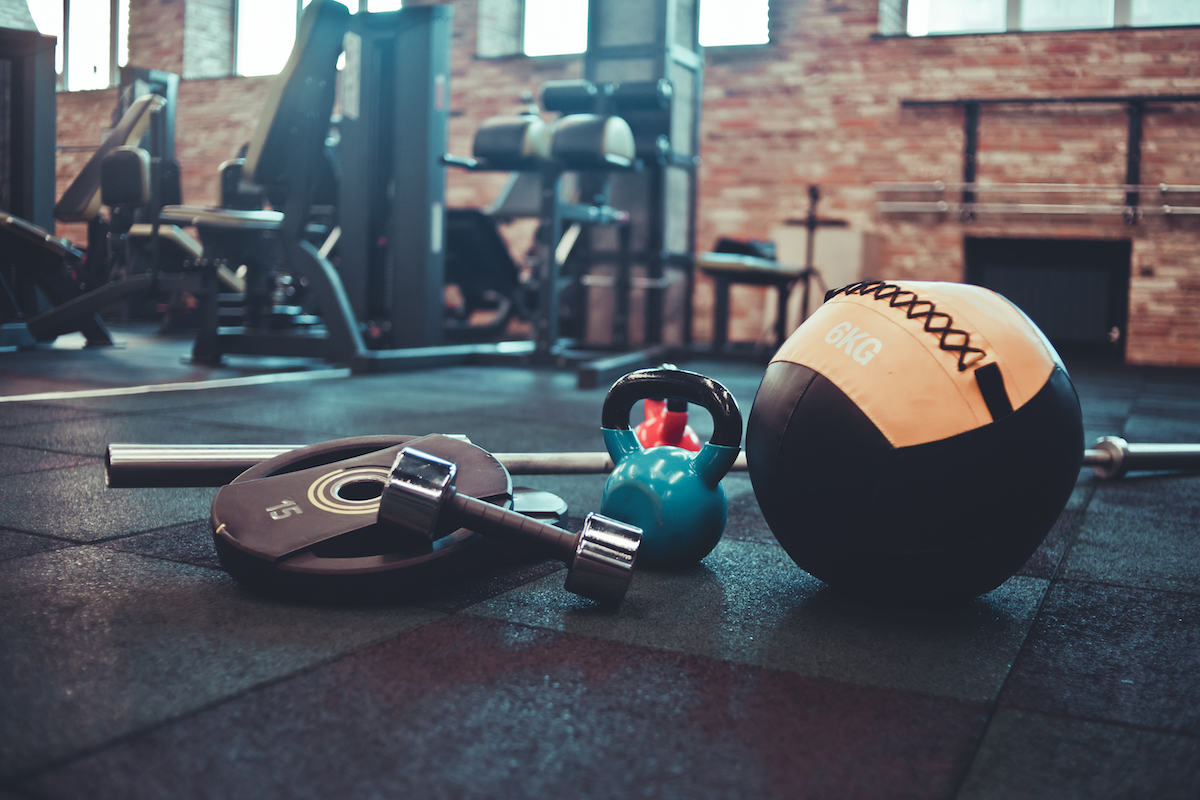As a personal trainer or fitness guru in the fitness industry, you’re charged with helping your clients achieve their health and fitness goals. To do this effectively, you must assess their posture as part of your routine. Your client will likely be more willing to cooperate with your program if they know that improving their posture is good for them.
In this blog post, we look at the importance of posture assessment as part of the personal training process and offer you some tips on how to conduct an effective assessment of your client's posture. Understanding the risks associated with an adverse posture will help you work more efficiently with your clients to achieve optimal results.
If you're a fitness guru, you must be aware of your posture and how it affects your body. Poor posture can lead to back pain, neck pain, and other health problems down the road. This article will teach you how to check your posture and what to do if it's poor. We'll also provide a posture assessment guide for fitness professionals.
What Does Good Posture Look Like?
Normal posture is when the head is balanced over the shoulders, with the ears in line with the middle of the shoulder. The shoulders are level and relaxed, and the pelvis is level. There should be a slight curve in the lower back, and the knees should be aligned.
To know whether or not your client has good posture, you have to have a clear idea of what good posture is. Generally, good posture is when the head, spine, and pelvis are aligned and balanced. Bad posture, on the other hand, refers to a position in which one or more of the above body parts are misaligned.
Assessing The Risk Of Bad Posture
Performance assessments are crucial in posture analysis because they indicate how the person is using their muscles to support their posture. This will help you to identify whether or not your client has good posture. If they are at risk of bad posture, you can work with them to improve it.
Clients with poor posture often don’t know the risks of poor alignment. If you can detect their posture issues early, you can help them correct the problem and avoid further complications.
Overhead Squat Assessment
Have the client perform this assessment. The overhead squat assessment is a movement screening test that can be used to determine if someone has good posture or not.
The test is conducted by having the person stand with their feet shoulder-width apart and hands behind the client's head.
They then squat down as low as they can without losing their lower back's natural arch. If they can’t squat down low enough, or if their lower back rounds, it indicates they have poor posture.
Anterior Pelvic Tilt
The anterior pelvic tilt is a posture problem that can be diagnosed by looking at the person from the side. If their pelvis is tilted forward, it’s an indication of anterior pelvic tilt.
This posture problem can lead to lower back pain and other health complications. If the client walks with an anterior pelvic tilt, you can help them improve their posture by teaching them how to engage their glutes and core muscles.
Posterior Pelvic Tilt
The posterior pelvic tilt is the opposite of the anterior pelvic tilt. It can be diagnosed by looking at the person from the side.
If their pelvis is tilted backward, it’s an indication of posterior pelvic tilt. This posture problem can also lead to lower back pain and other health complications.
How To Identify The Cause Of Poor Posture
As a fitness professional, movement assessments are a crucial part of your toolkit.
They help you identify posture and movement problems to design an effective corrective exercise program. When conducting a posture assessment, it’s essential to look for the root cause of the problem. Is it tight muscles? Weak muscles? Poor joint mobility? Once you’ve identified the reason, you can design a corrective exercise program to help your client improve their posture and prevent further injury.
To determine the cause of your client’s poor posture, you need to conduct a posture assessment. A posture assessment involves two steps - Identifying the posture problems and finding the root cause.
Identify The Posture Issues
To identify the posture issues, you must first understand the body’s “normal” position. To do this, you will need to look at pictures of people with good posture. You can find images online or in a posture assessment guide. Once you know what “normal” looks like, you can inspect your client’s posture and identify any issues they may have. The client's body should be symmetrical, and their posture should be upright.
There are many possible causes of poor postures, such as tight muscles, weak muscles, or poor joint mobility. To find the root cause of your client’s posture problem, you will need to conduct a series of tests and assessments.
Find The Root Cause Of Poor Posture
The client's ability to maintain good posture depends on the strength of the muscles and joints and the range of motion in those joints.
There are many potential causes of bad posture, including - Muscle imbalances and joint injuries, poor ergonomics, stress, and poor lifestyle choices, such as lack of sleep and physical activity. You must identify the root cause of each problem to determine the best course of action for correcting posture.
What Is Posture Assessment?
A postural assessment is a process that helps you identify the posture issues and root causes of those issues. A posture assessment is usually completed with the help of posture assessment guides.
Posture guides show you how to check your client’s posture and identify potential issues. Posture guides are available online, and you can also find them in many books on posture. A stretching program conducted by personal trainers can improve posture.
Why Is Posture Assessment Important?
A posture assessment can help you determine the best course of action for correcting your client’s posture. It can also help you avoid any potential issues caused by your client’s posture, thereby improving your client's health and quality of life.
Posture issues can be corrected by strengthening or stretching the muscles or using ergonomic tools, such as a posture correction device.
Specific posture issues can trigger other problems, such as lower back pain, leading to sciatica.
How to Conduct a Posture Assessment
Posture Assessment Guide
As trained professionals, the first thing you should do is look for a posture assessment guide. Posture guides are available online and in books. A posture assessment guide will help you identify the posture issues and the root causes of those issues. It will also help you determine the best course of action for correcting your client’s posture.
Observation
Observe your client’s posture to identify any posture issues. You can watch your client sit, walk, and move. Once you have identified the posture issues, you can look for the root causes.
Watch Your Client From The Side And Front
First, look at the head and neck. Does the headrest on the shoulders? Is the head tilted to one side? Is there a gap between the earlobe and the shoulder? Is it the head level?
Next, look at the spine. Does the spine appear straight, or does it have a curve? Is the spine pushed forward or backward?
Finally, look at the pelvis. Is it pushed forward or pushed backward? Is it level? You can also observe your client’s posture by checking their clothing for any wrinkles that may indicate misalignment.
You may also want to take notes to help you remember your observations. You can also take pictures of your client’s posture to help you remember your observations later.
What Should Trainers Know About Their Client’s Posture?
The client’s posture may affect the training program. If your client has an issue with the lumbar spine, you may want to avoid exercises that target the lower back, such as the deadlift. If your client has a problem with the cervical spine, you may want to avoid exercises that pressure the neck, such as the chin-up.
If your client has an issue with the thoracic spine, you may want to avoid exercises that push the shoulders forward, such as the bench press. You can also use the client’s posture to help determine the optimal posture correction device for the client.
Should Everyone Have A Posture Assessment?
Posture assessments are recommended for those with existing posture issues who want to prevent future problems. As a personal trainer, you should recommend a posture assessment to all your clients.
New clients may have posture issues that you can help them correct. Conducting a posture assessment can help you identify the problems and help your new clients achieve better posture.
Existing clients may already have posture issues that you can help them correct. Conducting a posture assessment can help you determine the best course of action for correcting their posture.
Posture assessments can help exercisers determine their progress and the best posture correction device.
Summary
Posture assessments can help you identify and correct posture issues before they become serious.
If you are a fitness guru, then you know that posture is essential for both your clients and yourself. Posture affects your client’s physical appearance and can be the root cause of pain or joint problems. That’s why it’s crucial to conduct posture assessments with your clients regularly.
Remember, posture assessments are not just for new clients. They are also for existing clients and even for yourself! Posture assessments can help you determine the best posture correction device for your client.





.jpg)

